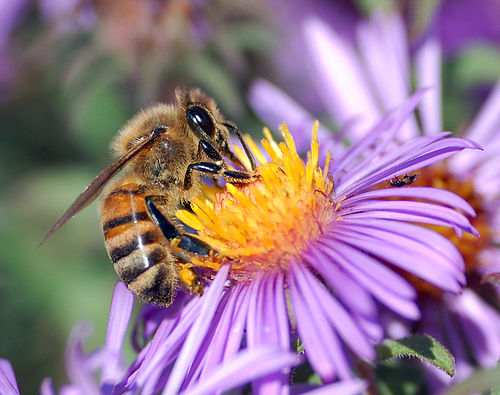Bees, a group of insects in the order Hymenoptera and family Apidae, are well known for their social structure, division of labor, and production of honey and beeswax. Bees play a vital role in agriculture around the world as they are integral to maintaining ecosystems and human food supplies during the pollination process.

Body size: Bees are usually small to medium-sized. The body is divided into three parts: head, thorax and abdomen, with six legs and two pairs of wings.
Appearance: Body color ranges from solid golden yellow to orange or black, and may have varying degrees of streaking. The body is covered with down, which facilitates the carrying of pollen.
Life cycle: Bees undergo a complete metamorphosis process, including eggs, larvae (maggots), pupae (larvae after building a house), and adults.
Social structure: Bees are social insects with complex social hierarchies and division of labor. A typical bee colony consists of a queen (responsible for laying eggs), thousands of worker bees (responsible for collecting honey, raising larvae, taking care of the hive, etc.), and a few drones (serving the queen during mating).
Beehive: Bees build a hive with multiple hexagonal cells, usually made of beeswax, to store honey and pollen and to incubate bee eggs.
Honey collection and pollination: Bees are excellent pollinators. In the process of collecting nectar and pollen, they spread pollen between flowers, promoting plant reproduction and diversity.
Chemical Communication: Bees use complex chemical signals (pheromones) and behavioral movements (such as dance) to communicate.
Queen: A mature queen will leave the hive on a nuptial flight, mate with multiple drones in the air, and bring back enough sperm to be stored in her body for egg laying throughout her life cycle.
Worker bees and drone bees: Worker bees are sterile female bees and do not participate in reproduction; the main task of drone bees (also called flowerless bees) is to mate with the queen bee.
Bees face a range of threats, including habitat loss, pesticide abuse, diseases (such as mite infestations), climate change and other environmental stresses. These factors combine to cause a decline in bee populations around the world known as Colony Collapse Disorder (CCD).
Given the critical role of bees in global food production, it is important to protect bees’ natural habitats, reduce pesticide use, and support beekeeping practices that promote bee health.
Humans have lived in symbiosis with bees since ancient times, obtaining products such as honey, beeswax, bee pollen, royal jelly and bee venom from bees. Modern beekeepers manage bees to produce bee products and provide bee colonies to farmland and other places for pollination services. In addition, scientists and beekeepers closely monitor bee health to prevent the spread of disease. Around the world, bees are also important targets of ecological research, education and conservation efforts.
animal tags:
We created this article in conjunction with AI technology, then made sure it was fact-checked and edited by a Animals Top editor.